THANKS FOR VISITING OUR BLOG!
PLEASE CLICK HERE TO SEE OUR QUICKER LOADING BLOG THAT'S IN BETA STAGE!
THANK YOU ALL FOR CHECKING US OUT AND WATCH FOR OUR FULLY FUNCTIONING NEW SITE UPCOMING SOON!
ALSO WATCH FOR OUR CONTESTS FOR GREAT PRIZES COMING SOON IN 2009!
OLEDEVICES.COM BETA SITE LINK:
http://oledevices.wordpress.com/
OLED industry resources blog of detailed information keeping you current on the latest in OLED trends, devices, gadgets, displays, OLED TV. Data on related topics, research and reviews on advanced OLED technology; Organic niches such as AMOLED, FOLED, PHOLED, TOLED, WOLED and the like. Additional information related to other state of the art FPD - Flat Panel Display Technology such as LCD, Plasma, SED, FED, Laser, PDP, Computers and more.
Friday, October 17, 2008
OUR NEW OLED DEVICES BLOG
Posted by
ImportersExporters Net
at
6:24 PM
0
comments
![]()
![]()
Labels: BETA SITE
Friday, September 12, 2008
SONY UNVEILS WIRELESS, BATTERY POWERED OLED TV

THANKS FOR VISITING OUR BLOG! PLEASE CLICK HERE TO SEE OUR QUICKER LOADING BLOG THAT'S IN BETA STAGE!
THANK YOU ALL FOR CHECKING US OUT AND WATCH FOR OUR FULLY FUNCTIONING NEW SITE UPCOMING SOON! ALSO WATCH FOR OUR CONTESTS FOR GREAT PRIZES COMING IN 2009!
Posted by
ImportersExporters Net
at
10:43 PM
0
comments
![]()
![]()
Labels: SONY XEL-1 BATTERY POWER
Tuesday, September 9, 2008
SAMSUNG SHOWCASES PROTOTYPE OLED TELEVISIONS
 SAMSUNG OLED 40" PROTOTYPE TELEVISION
SAMSUNG OLED 40" PROTOTYPE TELEVISION
THANKS FOR VISITING OUR BLOG! PLEASE CLICK HERE TO SEE OUR QUICKER LOADING BLOG THAT'S IN BETA STAGE!
ALSO WATCH FOR OUR CONTESTS FOR GREAT PRIZES COMING IN 2009!
It seems that anything relating to OLED technology is gaining more and more attention and with news releases almost weekly of some new company or product utilizing OLED technology, the OLED industry certainly will be one to reckon with when it becomes mainstream. What has stopped Samsung along with the others in creating OLED panels in mass quantity within the larger format screens, is the cuurent high costs in processing OLED displays for monitors and tv's.
However it looks like 2010 is the target year when alot of these issues will be dealt with according to projected plans from many of the OLED manufacturers. It has been clearly stated by Samsung that 2010 will be the banner year for their company and OLED to hit the mass retail marketplace bigtime and cover the globe with this amazing display technology.
Samsung previewed at the this month's IFA Berlin Show two sizes of OLED televisions with a 14" and a 31" OLED screen and the usual super ultra-thin profile along with the usual vivid contrast and deeply saturated colours.
Posted by
ImportersExporters Net
at
3:24 AM
0
comments
![]()
![]()
Labels: Samsung OLED Stakes Claim
Tuesday, August 12, 2008
OLED SMARTSWITCH & OLED SMART DISPLAY BY NKK
 NKK OLED SMARTSWITCH & SMARTDISPLAY
NKK OLED SMARTSWITCH & SMARTDISPLAYTHANKS FOR VISITING OUR BLOG! PLEASE CLICK HERE TO SEE OUR QUICKER LOADING BLOG THAT'S IN BETA STAGE!
NKK Switches, one of the world's leading manufacturers and designers of switch devices, has released their latest innovations within the OLED niche, OLED SmartSwitch and OLED SmartDisplay. These are high resolution, programmable switches that offer all the benefits of OLED over the conventional LCD programmable switches such as higher contrast along with a much more intense image, 180 degree angle of viewing, high range of colours, low energy use, quick response times and of course no backlighting required.
The OLED SmartSwitch and SmartDisplay are emissive devices operated by commands and data supplied via the SPI communications protocol. The switch is capable of 64RGB x 48 pixel resolution and the display 52RGB x 36. The wide viewing area of the switch is 15.5mm x 11.6mm (horizontal x vertical) and the display is 12.9mm x 9.9mm (horizontal x vertical).
The NKK OLED SmartSwitch and SmartDisplay are programmable push-button styl eswitches and displays that feature a changeable OLED module with 65,536 colors in 16 bit mode and 256 colors in 8 bit mode. Both are also capable of displaying full-motion video which is an awesome feature for a such a switch imho.
copyright - oledomains- 2008 - all rights reserved
Posted by
ImportersExporters Net
at
3:53 PM
0
comments
![]()
![]()
Labels: NKK SMARTSWITCH SMARTDISPLAY
Tuesday, July 22, 2008
ANOTHER ART LEBEDEV OLED CONCEPT CREATION - OLED KEYPAD
Posted by
ImportersExporters Net
at
3:43 PM
0
comments
![]()
![]()
Labels: OPTIMUS PULTIUS KEYPAD
Saturday, July 5, 2008
ANOTHER SONY FIRST IN FPD TECHNOLOGY! FED - FIELD EMISSION DISPLAYS
Just when you thought Flat Panel Display (FPD) HDTV technology & all its related acronyms couldn't get any more complex, with an entire host of technology available today, such as CRT (Cathode-Ray Tube), LCD (Liquid Crystal Display), Plasma (PDP), OLED (Organic Light- Emitting Diode), DLP (Digital Light Processing), SED ( Surface-Conduction Electron Emitter Display), LCOS ( Liquid Crystal on Silicon), 3DTV, & Laser TV, Sony & Motorola have just recently announced plans to roll-out their latest creation, the FED - Field Emission Display TV, set for a 2009 release date to be annnounced.
So then, what is FED? FED was first invented in the 1970's as an alternative to CRT technology and is now making a come back in a big way. Field Emission Displays (FED) is similar in technology to SED but it utilizies a grid of carbon nanotubes working within a vacumn like a CRT which phosphors, but it is a much thinner profile display, similar to what OLED is now. The nanotubes emit electrons which in turn excite a phosphorescent material which light up to create the image on the screen.
This lends itself therefore to a very thin, low power consumption, energy-efficient, super-sharp, high definition image, impressive contrast ratio of 20,000:1, ultra wide angle of vision, short response time, plus they are easier to manufacturer than the latest OLED displays at this point in time. FED uses much less power than a plasma display for example since plasma displays generate light in a three step process that requires a gas to be ionized. Which then emits ultra-violet light that in turn stimulates a phosphor on a glas surface which then produces the visible light we then see. FED stimulates the phosphors directly with electrons that are emitted by the carbon nanotubes (CNT) hence leading to less power consumption by eliminating this power hungry ionization step. The main element of the carbon nanotube field emission display (CNT-FED) television is the field-emission cathode which works by combining the principles of quantum tunneling similar to a traditional lightning rod.
Similar to a regular CRT, a cathode emits electrons however FED does not rely on the heating of the cathode to boil off the electrons. In field emission, the cathodes are tightly packed along with their supporting electronics without the entire display overheating. The cathodes can therefore be placed in close proximity to the glass face of the display screen. So instead of one electron beam to address a pixel such as in a CRT, the CNT-FED allows each pixel its own electron beam. This means that even with 20% of the emitters failed you cannot see any dead pixels.
So with the inherent flaws in current display technology for HDTV many researchers are now looking towards carbon nanotubes to create this new class of large area, wide-screen, ultra-high resolution, low cost flat panel displays. FED however may have some issues with screen flicker like a traditional CRT but with the 24 to 240 frames per second refresh rate this most likely is be due to be affected by the sync between ambient fllourescent light and the screen frequency.
Models up to 30" with full HDTV features and support are expected to be released in 2009. Pricing is said to be cheaper to manufacture than LCD's due to less components.
copyright oledevices - 2008 - all rights reserved
Posted by
ImportersExporters Net
at
8:13 PM
0
comments
![]()
![]()
Labels: FED
Monday, June 9, 2008
OLED INDUSTRY NEWS UPDATES
Lots of action these days in the OLED industry and some major players are going all out to gain a major foothold within the large screen organic FPD market.
The major Japanese newspaper, Sankei Shimbun, stated in a recent article that Matsushita Electric Industrial /Panasonic Corp that it is finalizing plans to become the world's first to mass-produce 37 inch OLED televisons within the three years. The other big guns like, Sony, Samsung SDI, Phillips, Toshiba, Universal Display, to mention a few major organic panel manufacturers, better take note that Panasonic / Matsushita means major business and as the world's # one plasma tv manufacturer they are well ahead of the curve if they keep this production schedule in-line to produce the large OLED panels.
The next generation flat panel televisions utilizing this incredible OLED technology will certainly be the next battleground for these titans of the electronic's industry to lay out their mission plans and strategies in securing their territory in this new and massive growth organic electronic industry. Sources stated also that the 37 inch OLED TV's made by Matsushita would cost in the range of $1,400.00 ( 150,000 yen), so it looks like the cost of OLED display technology will be at a reasonable entry price and within most peoples budgets for high end electronics. Another added bonus for us to wait and buy large screen OLED TV's very soon!
Production on their OLED TV's will be done at their new LCD production plant now being built in Himeji, in western Japan plus it wil share production lines with IPS Alpha Technology LCD factory which it owns a 30% share. Matsushita shares will also be changing its stock name to Panasonic Corp. on October 1st 2008.
copyright oledevices - 2008 - all rights reserved
Posted by
ImportersExporters Net
at
9:58 PM
0
comments
![]()
![]()
Labels: oled industry news
Monday, May 26, 2008
SONY INVESTS MORE $ IN OLED TELEVISION DEVELOPMENT

THANKS FOR VISITING OUR BLOG! PLEASE CLICK HERE TO SEE OUR QUICKER LOADING BLOG THAT'S IN BETA STAGE!
ALSO WATCH FOR OUR CONTESTS FOR GREAT PRIZES COMING IN 2009!
At the recent Society For Information Displays (SID) show , Sony releases big news in expanding their OLED product line. With the creation of Sony's XEL-1 OLED television, the market was waiting with much anticipation what was next in the OLED expansion.
The OLED race to be king has confirming aproximately a $ 200 million investment to increase its lead in manufacturing mid to large size OLED televisions. Yoshito Shiraishi, general manager of E-Products and Business Development Department, TV Business Group, Sony Corp, delivered his keynote speech "Sony's challenge is to be the first one out with OLED televisions". Wherein he discussed the history & the future of Sonys development of OLED related technology development
According to Mr. Shiraishi, Sony had developed a newer prototype version of OLED TV every 3 months when creating the XEL-1. Sonys committment to being the top in the latest televison and display tech is not a new thing of course.
copyright oledevices - 2008 - all rights reserved
Posted by
ImportersExporters Net
at
2:31 AM
0
comments
![]()
![]()
Labels: sony oled lead
Wednesday, May 7, 2008
DUPONT ALLIANCE WITH DAINIPPON RESULTS IN HIGHER PERFORMANCE & LOWER COSTS FOR OLED DISPLAY PANELS

THANKS FOR VISITING OUR BLOG! PLEASE CLICK HERE TO SEE OUR QUICKER LOADING BLOG THAT'S IN BETA STAGE!
ALSO WATCH FOR OUR CONTESTS FOR GREAT PRIZES COMING IN 2009!
OLED technology takes another step forward with the recent alliance between Dupont and Japan's DaiNippon Screen Mfg. in developing manufacturing equipment for printed organic light emitting diode (OLED) . Not only will they make the equipment together, they have an added strategy within the OLED sector to develop the required materials, technology and the necessary production equipment.
Dupont is introducing its small molecule based OLED solution materials plus its proprietory processing technology while DaiNippon screen has developed a nozzle printing technology print OLED materials at high speeds.
This would be in-line with their joint upcoming mass-production of OLED panels, screens, displays, and the like. This joint effort will result in higher performance, lower costs eventual breakthroughs in future OLED display technology.
SUMITOMO CHEMICAL PLANS TO CREATE LARGE OLED PANELS BY 2010
One of Japan's largest chemical companies announced Friday that it will start to produce OLED panels over 40 inches in size by 2010.
The companies president, Hiromasa Yonekura, announced Sumitomo will use a new proprietory technology similar to ink jet printing to manufacture the large profile OLED displays. This means that the smaller screens presently associated with organic display technology has been overcome, along with the associated lower production costs and fewer production prodblems when creating large footprint OLED screens.
Their production for smaller to mid-size OLED panels will commence in 2009 with larger 40" + coming in 2010. Sumitomo is in negotiations presently to supply major television manufacturers with larger OLED displays however to date no information regarding the companies have been released.
copyright oledevices - 2008 - all rights reserved
Posted by
ImportersExporters Net
at
6:49 PM
0
comments
![]()
![]()
Labels: dupont / dainippon
Tuesday, April 8, 2008
OSRAM & INGO MAURER PREMIERES "EARLY FUTURE". OLED LIGHTING AS FUNCTIONAL ART!
Osram Opto Semi-Conductors and world re-known artist and lighting designer Ingo Maurer have teamed up together to create the world's first, limited edition OLED (Organic Light-Emitting Diode) functional organic table light dubbed as "Early Future".
To create these one of a kind, efficient, eye-catching, innovative OLED lamps, Ingo used 10 WOLED (White OLED) ultra-thin tiles ( 132mm x 33mm) supplied by Osram. Maurer probably most well known for his exhibit in 1966 of "BULB" shown in the New York Museum of Modern Art since 1969. Not too mention along with other works he has designed who has received a multitide of awards over the years for his functional yet abstract designer lighting creations.
Organic LED's are manufactured as high energy efficient, low operating voltage plus enviro friendly with mercury-free design. OLED lights are not a collection of a single light source as an incandescent bulb but a uniform light generating surface area that is razor-thin and super-lightweight, with a pleasing light making them an excellent lighting choice for commercial and residential use.
Osram has a team of 50 engineers working on the development of furthering OLED lighting technology. The amazing properties of OLED light means that the future will soon bring flexible and transparent organic light to the market quite soon. Transparent OLED lighting means that by adding OLED panels over a regular glass or even an automotive window, during the day natural light will shine through however at night the window will transform into a self-illuminating window casting a very pleasing light to any room, according to Dr. Bernhard Stapp, Head of Solid State Lighting at OSRAM Opto Semiconductors.
The proto-type of " Early Future" will be showcased at this months Frankfurt Light & Building Fair .
copyright - oledevices- 2008 - all rights reserved
Posted by
ImportersExporters Net
at
7:49 PM
0
comments
![]()
![]()
Labels: Osram / OLED Lighting
Thursday, March 20, 2008
EFFICIENCY OF OLED DISPLAYS BRIGHTENS UP INDUSTRY
THANKS FOR VISITING OUR BLOG! PLEASE CLICK HERE TO SEE OUR QUICKER LOADING BLOG THAT'S IN BETA STAGE!
ALSO WATCH FOR OUR CONTESTS FOR GREAT PRIZES COMING IN 2009!
Posted by
ImportersExporters Net
at
11:05 PM
0
comments
![]()
![]()
Labels: oled efficiency
Friday, March 14, 2008
GE TO BRING ORGANIC LIGHT TO LIFE
General Electric Global Research of Niskayuna, New York, the central research division of GE, an obvious giant among industry, has announced a major milestone to "go green" with the expansion of their OLED Lighting production facilities. They have proceeded to advance within the ever fascinating OLED business by introducing their plans devised for a new rolled OLED production manufacturing facility. This was a 4 year, $13 million collaboration between GE Global, Energy Conversion Devices Inc. (ECD builds the production machinery and supplies the expertise to create the OLED roll-to-roll process) and the U.S. Commerce Department's National Institute of Standards and Technology (NIST).
GE has a process that will eventually create organic panels that will be punched out kind of like a cookie cutter in comparison, for use within all types of products of all shapes, sizes, styles including many other varieties of OLED, like FOLED (Flexible Organic Light-Emitting Diode) and AMOLED) Active Matrix Light-Emitting Diode) for example. The process can be likened to a newspaper web press offset printing method where huge rolls of paper-thin organic sheets can be imprinted with the organic compounds for use then within all types of products of an entirely new genre. OLED lighting sheets will be created for applications from residential and commercial lighting to possibly someday for use in space.
At present GE is in the research stages by demonstrating their approach to how the OLED lights will operate but mass production is around two years away in the industry's estimations. With this roll-to-roll process GE's OLED light production ultimate goal is designed to eventually replace traditional light bulbs and flourescent tubes by creating OLED light sheets that are ultra-thin, lightweight, organic in nature, with the ability to save energy and produce a naturally appealing light for humans.
Sounds like a winner to me, where do we get them?? Sorry but it won't be for another 2+ years minimum at least and then some until GE's facility is up and into mass production for retail worldwide.
General Electric doesn't go BIG unless they know exactly what's coming, since they are one of the big conglomerates that created the trends plus not too mention the fact that they created the lightbulb...... GE was formed in 1892 with a merger of Edison Electric Light Co. and Thomson-Houston Electric Co), so today it only makes sense they have committed to take this cool new OLED technology and start to produce super energy efficient, eco lights that will one day become as common an item in our daily lives just as the incandescent lightbulb once was o'so long ago.
Edison's main specialty was and under GE today, it still is LIGHT. This means if GE's involved in OLED technology, a long line of others are right behind them ready to grab a piece of the OLED pie. Those corporations, investors, inventors, speculators, and the like who are switched on enough ........ (get it ?) will be lining up to supply this new fangled organic lighting to the world. That spells a boatload of business and profits for all of those that take heed. But anyway you look at it, OLED in ALL forms is GOLED (Gold, get it? I'm on tonite folks) !!
copyright oledevices 2008 - all rights reserved
Posted by
ImportersExporters Net
at
3:53 AM
0
comments
![]()
![]()
Labels: GE OLED LIGHTS
Tuesday, February 19, 2008
SONY TO SPEND $200 MILLION ON OLED DISPLAY PRODUCTION
THANKS FOR VISITING OUR BLOG! PLEASE CLICK HERE TO SEE OUR QUICKER LOADING BLOG THAT'S IN BETA STAGE!
ALSO WATCH FOR OUR CONTESTS FOR GREAT PRIZES COMING IN 2009!
With the recent increase in LCD sales driven in most part by the upcoming digital tv conversion within the USA, prices are finally at a point where just about any household will own an LCD type of flat panel display (FPD). So with this huge increase in LCD sales plus the lower cost to manufacture LCD displays, there is a void now created within the electronic world that must be filled.
In 2008 this void looks like its being filled by the latest in the OLED (Organic Light-Emitting Diode) or PH-OLED (Phosphorescent-Organic Light-Emitting Diode) technology, the high end, all singing, all dancing, fully optioned, mother of all displays available to man today. A tv made from phosphorescent organic materials, as razorthin as a slice of your favourite deli meat and a screen image as memorable as the first time I laid eyes on a spanking new Sony Trinitron back in the day.
Japanese electronics giant Sony released details today on their plans to ramp up their technology to develop medium to large screen OLED TV's. Starting in mid 2008 this injection of capital will help to expand on further development at Sonys Mobile Display Corporation Plant (SMD), technology relating to the deposition of light-emitting layer sub-strates as well as the manufacturing of low temperature polysilicon transistors (LPTS). With this influx of funds to expand on the facility the end goal being the ability to manufacture larger OLED display panels for use within various commercial and retail sectors.
The major issues with OLED is the limited size of the organic displays along with the present high costs to manufacture them. As a comparison, glass substrates from which organic panels are cut are 600mm x 720mm & 550mm x 650mm. Seventh and eight generation LCD plants use sub-strates up to a whopping 2200mm x 2500mm. So in comparison with Sony's OLED technology today, OLED development is equivalent to approximately a third generation or possibly a 3.5 generation LCD plant. The projected production date for large screen OLED display at the SMD plant is by early 2010.
One other advantage of OLED panels (other than the many obvious ones) is the lower manufacturing process costs of OLED compared to LCD. Since OLED tech is emissive, meaning when the organic molecules phosphorize to emit photons equaling light the electroluminescense is relying on the organic molecules to generate white light called WOLED. By tailoring the compositions of the organic materials it is also possible to create devices that emit coloured light as well.
OLED is created by applying the phosphorescent materials onto glass or plastic / polymer sub-strates which allow for their unbelievable ultra-thin displays. There are many ways PHOLED can be manufactured: organic vapour phase deposition, ink-jet printing, laser-induced thermal imaging, spin coating, and organic vapour jet printing. For low-cost manufacturing of high-efficancy PHOLED's the choice of fabrication method depends on operational costs, length of processing time, reproductability of device performance, and the organic material's compatibility with the particular process. PHOLEDs may one day be manufactured using roll-to-roll processes similar to those used to create magazines and books.
In comparison with the back-lit technolgy utlized within LCD, the manufacturing costs of OLED will be much less per unit, making OLED a much better FPD (Flat Panel Display) choice in the long run. As with any new technology with such major backers which is so cutting edge, to successfully become integrated into society en masse as LCD and plasma has for a number of years, is a long term committment by these corporations. The recent drop in LCD TV and LCD monitors has given the electronics industry another major boost. Plus with the upcoming USA 2009 conversion to all digital TV signal means more FPD's will be sold within the USA, so it opens the door for OLED TV and all the other OLED related product's to take center stage in the ever expanding, hugely exciting organic electronics industry today.
Due to the past difficulties in the blue spectrum and the problems associated with larger organic display's, once issues such as these are properly addressed and dealt with in research, like these types of corporations can do, then OLED should reach 40" by mid 2009 - 2010 quite easily with the advancements of continuous research. It seems each day a new OLED related news release is made on any web news feed, so this is certainly a good indicator of the continued growth of the market. For the record 2007 - early 2008 has shown to be a time when a large number of the technical barriers within some of these concerns have been rectified or at least dramatically improved upon from say 1 year ago even.
There is a huge array of major corporations such as Samsung SDI, Toshiba, Sony, Hitachi, Canon, Toyota Ind., Matsushita / Panasonic, Universal, Display, the list goes on, on and who are involved in niches of OLED such as; FOLED - Flexible OLED, AMOLED - Active Matrix OLED, Passive Matrix OLED, WOLED - White OLED, PHOLED - Phosphourescent OLED. As far as the concerns over the high retail price of OLED in the stores when the numbers are calculated they show that the tooling costs for the OLED plants to gear up to manufacture OLED displays will be gained back much quicker in comparison to LCD due to the very nature of how organics are be created. Much less equipment, parts, labour, lower all around processing costs when compared to LCD means that even though OLED is much better technology, it doesn't mean that it has to cost more to be superior.
Samsung SDI has also announced it is engaging in expansion plans for the ramping up of their second phase in AM-OLED (active matrix OLED) production, many are referring to as " dream displays" within the industry. This move is intended to double production from the current 1.5 million to 3 million by cutting costs, wherever that may be is unsure at the moment however. SDI has invested 480 billion Won in its Cheonan, South Chungcheong Province plant saying production would double monthly output last October.
With Sony, Samsung SDI, Toshiba, Matsushita, Toyota Industries, Universal Display, Foled, Canon, and many more major players that have shaped the world of electronics now involved in the mass production of OLED display technology, the future looks razorthin, super sharp and bio friendly folks!
Posted by
ImportersExporters Net
at
8:37 PM
1 comments
![]()
![]()
Labels: sony oled invests $200 million
Sunday, February 3, 2008
FPD EXPO JUNE 2008 - KOREA FLAT PANEL DISPLAY EXPOSITION
An early head's up on what's upcoming for 2008.
The June exposition which will be full of advanced FPD (Flat Panel Displays) tech companies showcasing their OLED, LCD, plasma, PDP, Lazer, computer, electronics, nanotechnologies and the like, displaying the latest in FPD related technologies. Major players like Canon, Sony, Toshiba, Pansasonic, Universal Display, Seiko, Epson, Hitachi, Matsushita, Samsung.....the list goes on, will be highlighting many of their latest products utilizng FPD applications.
A large array of less prominent but none the less quite successful, are companies that are creating products relating to the FPD industry is a huge part of this trade shows appeal. These companies create the parts, test equipment, research, software development, hardware manufacturers, support systems, tech support, etc, etc. which support the big manufacturers in the industry for the creation of the final end products we crave. Many of these companies are glossed over as far as their importance within the long chain of development however without the groundbreaking products created by such firms today's state of the art products could not be developed for our use and ultimate pleasure.
oledevices.com - copyright 2008 - all rights reserved
Posted by
ImportersExporters Net
at
8:54 PM
0
comments
![]()
![]()
Labels: fpd expo 2008
Monday, January 28, 2008
OLED DISPLAY LIFESPAN DOUBLES!
ALSO WATCH FOR OUR CONTESTS FOR GREAT PRIZES COMING IN 2009!
The concerns over the degradation and life expectancy of OLED TV displays seems to be a fleeting one now that Toshiba along with Matsushita Display Technology are developing a new OLED prototype display panel that effectively doubles their life expectancy.... from the current 20,000 - 30,000 hours ( that's about 8 hrs per day use for 10 years) as an average to over 50,000 hours.
According to recent reports the development of a 20.8" protype OLED display is designed with a metal membrane that assists in light transfer from the polymers within the substrate through the glass surface much more efficiently than current OLED standards. This will mean that the OLED displays natural brightness can be cut in half while maintaining the picture quality and effectively doubling the units lifespan.
With this huge step of increasing the lifespan of OLED TV displays, it looks like a major hurdle has been overcome in the development process of OLED display technology. This could possibly lead to larger screen OLED TV's being available for retail sooner than predicted. As with LCD and Plasma TV OLED TV will eventually become an everyday product as time and product development allows.
oledevices.com - copyright 2008- all rights reserved
Posted by
ImportersExporters Net
at
10:06 PM
0
comments
![]()
![]()
Labels: oled lifespan doubles
Wednesday, January 23, 2008
WORLD'S THINNEST NOTEBOOK! APPLE'S MACBOOK AIR
THANKS FOR VISITING OUR BLOG! PLEASE CLICK HERE TO SEE OUR QUICKER LOADING BLOG THAT'S IN BETA STAGE!
ALSO WATCH FOR OUR CONTESTS FOR GREAT PRIZES COMING IN 2009!
Be Sure You Check Out the Other News Releases for the Apple MacBook Air on Our Blog as Well.
MacBook Air Features
The Air does not come however with a built-in dvd or cd optical drive player but it has the ability through Remote Disc the Air is able to locate drives on other computers within its range to grab the information from a dvd or cd.
Posted by
ImportersExporters Net
at
9:46 PM
1 comments
![]()
![]()
Labels: Apples MacBook Air
Wednesday, January 9, 2008
CES 2008 - HDTV's - SuperThin Is In !
THANKS FOR VISITING OUR BLOG! PLEASE CLICK HERE TO SEE OUR QUICKER LOADING BLOG THAT'S IN BETA STAGE!
ALSO WATCH FOR OUR CONTESTS FOR GREAT PRIZES COMING IN 2009!
Panasonic
Panasonic rocked the house when they unveiled their mind blowing 150-inch plasma television they say will be shipping by years end. This behemoth, said to be the world's largest plasma tv, sports : 4k x 8K" resolution ( about 8 megapixels). Panasonic was proud to state that 9 50 inch panels could replace it.
Hitachi
Hitachi Ltd. showed off their newest LCD prototype display that is twice as thick as the Pioneer plasma model, a 50" PDP TV at a super slim 1.5 inches, whcih is the name of this particular model with three sizes of 1.5" lcd tv's - 32", 37", 40".
Sony
Sony debuted their 27" OLED TV with 1080p res and predictions are looking at 2009 for this one. The XEL-1 is now shipping into North America for around $2,500 but that will eventually come down as time and larger screens are produced.
copyright 2008 - oledevices.com - all rights reserved
Posted by
ImportersExporters Net
at
7:44 PM
0
comments
![]()
![]()
Labels: ces 2008
Thursday, January 3, 2008
Apple Patents OLED Customizable Computer Keyboard
THANKS FOR VISITING OUR BLOG! PLEASE CLICK HERE TO SEE OUR QUICKER LOADING BLOG THAT'S IN BETA STAGE!
ALSO WATCH FOR OUR CONTESTS FOR GREAT PRIZES COMING IN 2009!
Update Feb 08
Apple's creative design teams are always going to surprise us with their innovativations not found in any other products on the planet and their recent patent filing in 2007 for an OLED QWERTY keyboard is starting to get some attention as of late.
With the increasing use of organic light emitting diodes - OLED - in devices today, Apple has proceeded to patent a dynamically controlled keyboard utilizing organic technology. It will be able to be mass produced since some of the standard components from traditional keyboards can be used in the OLED models. This means costs can be lower and made available simply enough for mass production if they proceed in that direction. This type of keyboard design would lend itself very well to media work, since applications like Adobe Photo Shop, FinalCut, Logic and more would be simplified due to the keys would each display more data on the keys...... or should we say touchpads?
OLED technology used for keyboard design, will ultimately lead to future styles that could easily incorporate a few added features such as; finger print recognition, video capability with AMOLED ( Active Matrix OLED )screens embedded into the keyboard plus stylized units using shaped FOLED ( flexible OLED) to vary the keyboard designs.
What are Oled's?
Apple's First iOLED Gadget in the Works
Patents can take a number of years to come to fruition if at all but as they make very clear....Apple embraces technology and they are superior in getting products to market....and fast! So it looks like 2009 -2010 and beyond will present some very interesting OLED inventions.
Apple OLED KeyBoard Article:
Art Lebdev Link:
Posted by
ImportersExporters Net
at
7:15 PM
0
comments
![]()
![]()
Labels: apple oled keyboard
SONY ZX-1

WORLDS THINNEST 9MM LCD TV
iRIVER SPINN WITH AMOLED DISPLAY
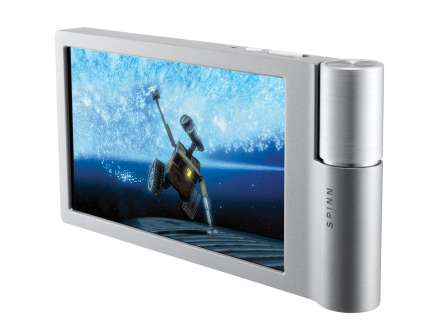
SONY OLED TOUCH DISPLAY PROTOTYPE

FED - SED PROCESS
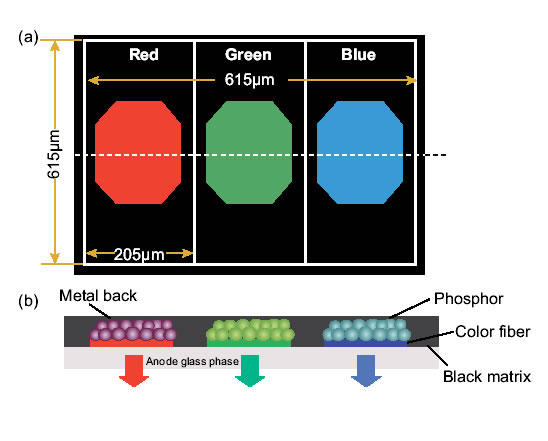
LATEST SUPERTHIN TOSHIBA PORTEGE R500 LAPTOP

SAMSUNG OLED DISPLAYS
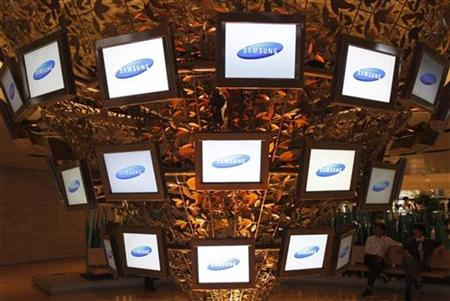
SONY'S AMOLED DISPLAY ELECTRONICS

WOLED " FLYING FUTURE " BY INGO MAUER
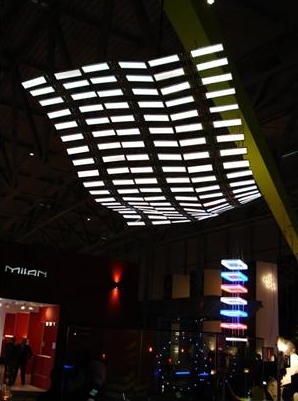
WHITE OLED BASIC STRUCTURE
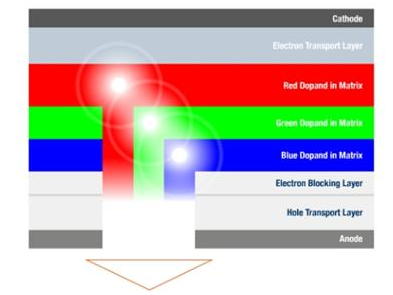
PROTYPE OLED SHUTTERS

SAMSUNG E950
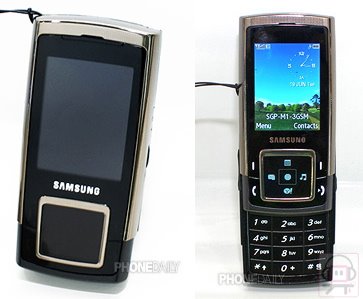
OSRAM LIGHT TILES

BLUE FLEXIBLE OLED LIGHT

IRIVERCLIX GEN2
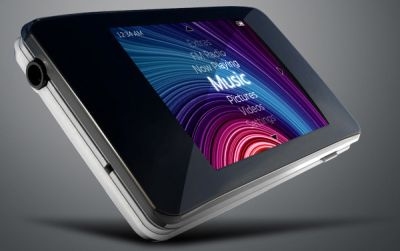
AMOLED BUTTERFLY CONCEPT PHONES

NOKA N96 OLED PHONE

IPHONE GEN 1
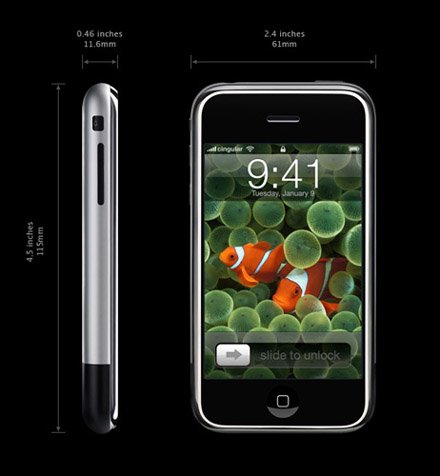
NOKIA DEMOS BENDABLE MORPH CELLPHONE

ORGANIC FLAT PANEL XEL-1 BY SONY
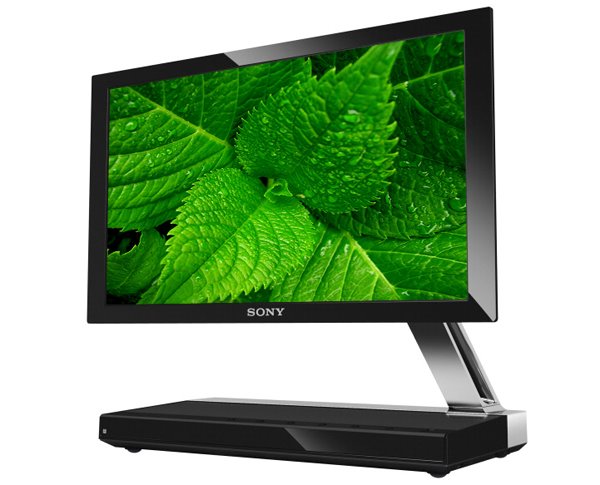
Super Slim, Super Sharp, Super Sony!
SONY XEL-1 FEATURES

OSRAM PROTOYPE OLED LIGHT PANELS

OLED TECHNOLOGY

Phillips Aurea TV
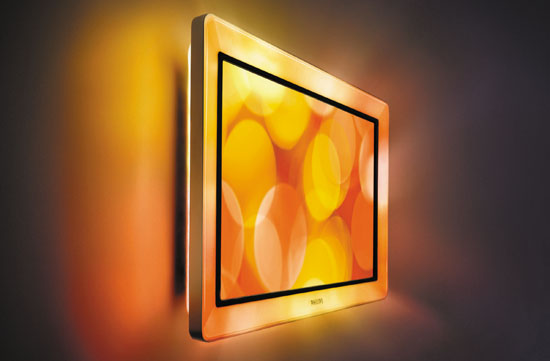
UltraThin OLED
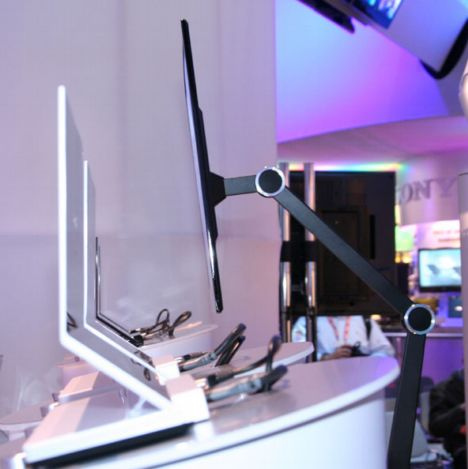
Sony's New OLED TV Release December 2007
NOKIA N58 AMOLED DISPLAY PHONE

OLED TECH
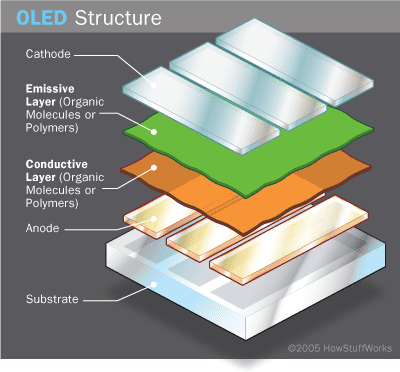
STRUCTURE
CLICK HERE FOR OLED DEVICES - OLED NEWS MAIN PAGE
KODAK OLED 7.6" PHOTO FRAME
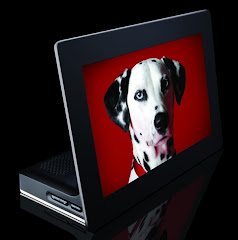
OLED DEVICES - OLED NEWS BLOG - Click Here To Get FeedBurner Version of OLEDevices.com Content
Ingo Mauer's " FLYING FUTURE"

Protoype WOLED light panel structure suspended in a wire mesh suspended to give an "airy but wave like feel"
TOSHIBA PORTEGE R500
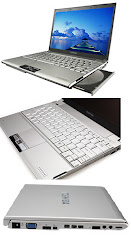
Super Slim Rival To MacAir
LG OLED PROTOTYPE LAPTOP

SONY OLED DISPLAY SHOWS ITS ELECTRONICS

SAMSUNG SDI OLED LAPTOP

Samsung to Introduce OLED Laptop for 2009!
DUPONT AMOLED DISPLAYS EXTREMELY VIVID COLORS

SID 2008 LINK
CIRCULAR OLED FLOOR LAMP PROTOTYPE

Morph Phone ProtoType
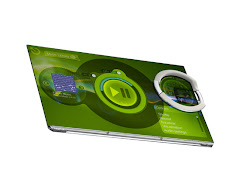
INTEL TUKWILA PROCESSOR
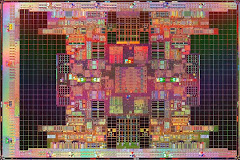
MILESTONE COMPUTER CHIP PASSES 2 BILLION TRANSISTORS
INTEL TUKWILA
Ingo Maurer OLED Lamp ProtoTypes

FPD EXPO 2008 - KOREA
Phosphorescent Emitters

GE BLUE OLED LIGHT
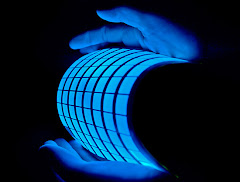
Samsung 31" Prototype OLED TV

Samsung 31" OLED TV


IPHONE DownLoads Just Like Magic
Very Cool Nokia Morph Concept Phone

OLED SHUTTERS

ZUNE VIDEOPRO UNLIMITED MOVIE, VIDEO, TV + DOWNLOADS
Mitsubishi 60" Laser TV

Powerful, Low Energy AMOLED Lighting


Downloads for PSP, Portable Games, Mp Players, TV, Reviews & More
NOKIA N96
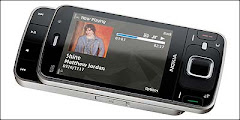
NOKIA N96 "MULTIMEDIA COMPUTER"
Film Legend Robert Redford to Headline at the GSMA’s Mobile World Congress

GSMA BARCELONA 11-14 FEBRUARY 2008
GSMA MOBILE WORLD CONGRESS
DUPONT PROTOYPE AMOLED DISPLAY

INFORMATIVE DUPONT OLED TECHNOLOGY LINK
Future of SmartPhones Here Today. Check This Gadget Out!
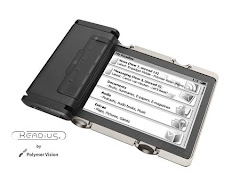
The Latest in Foldable Phones. Readius by Polymer Vision, Organic Based Folding Display.
Readius SmartPhone With Fold-Away Polymer Screen Launched
Flexible Sony OLED

FOLED
Sony"s Flexible OLED Video
E-PAPER
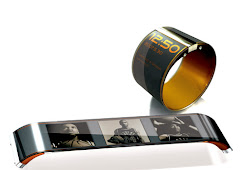
STAR WARS DARTH VADER Wii

Wii MEDIA DOWNLOADS
Universal Display

FOLED ProtoType
Very Cool OLED CNET Video Link

OLED vs LCD vs PLASMA
Diesel OLED Watches
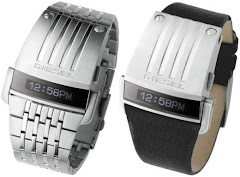
OLED Phone Keys
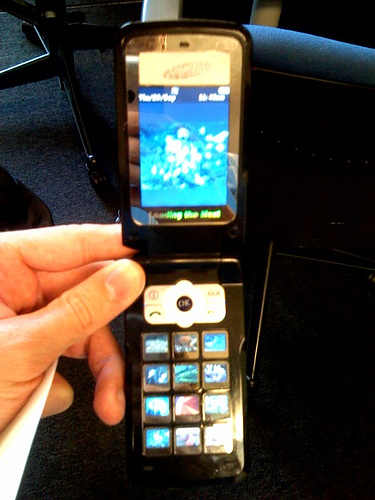
Samsung OLED 31" TV

Hitachi LCD

Panasonic"s 150" LCD TV

CES 2008 Debuts World's Largest Television
CES 2008 Link
Samsung

NV24HD
New Samsung NV24HD Digital Camera w/AMOLED
Sony XEL-1 Premier Release

Sony XEL-1

XEL-1 TV Out of Box Premiere
Awesome XEL-1 Photos
Organic Display
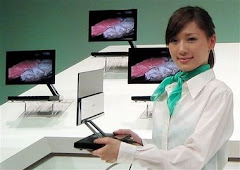
Fujitsu E-Paper

FOLED - Flexible OLED Screen
Sony Hawaii Unveils 2008 Gadgets
Sexy New Sony: TV of the Future Today
Premier of Samsungs 31-Inch AMOLED TV
Olevia LCD HDTVs on sale! Save up to $80 instantly!

Samsung 40" OLED TV
Samsung SDI Oled
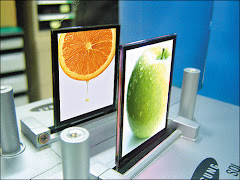
Crisp Images
2007 - GREAT YEAR FOR ELECTRONICS !
OLED LIGHT
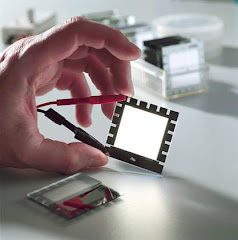
WOLED
GE OLED

General Electric OLED Samples
GE OLED Lighting
30" OLED TV from Toshiba for 2009
Canon PowerShot SX100

Samung Bendable Display
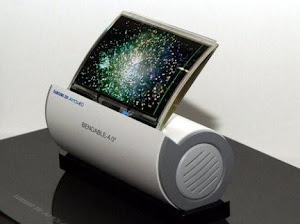
Super Cool OLED Product Applications
Flex Display; 16.7 million color OLED Display
FOLED SmartPen Prototype
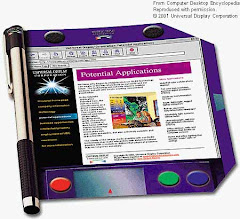
Roll-Out Flexible OLED Gadgets
OLED Structure

How OLED Displays are Made
Post Labels
- apple oled keyboard (1)
- Apples MacBook Air (1)
- BETA SITE (1)
- ces 2008 (1)
- dupont / dainippon (1)
- energy efficient oled tv (1)
- FED (1)
- fpd expo 2008 (1)
- Future OLED (1)
- GE OLED LIGHTS (1)
- new age oled lighting (1)
- NKK SMARTSWITCH SMARTDISPLAY (1)
- oled amoled organic tech (1)
- oled efficiency (1)
- oled industry news (1)
- oled lifespan doubles (1)
- OPTIMUS PULTIUS KEYPAD (1)
- Osram / OLED Lighting (1)
- room for oled tech? (1)
- Samsung OLED Stakes Claim (1)
- samsung sdi 40" oled tv (1)
- samsung w2400 dream handset (1)
- sir howard sony future (1)
- sony oled invests $200 million (1)
- sony oled lead (1)
- sony worlds first oled tv (1)
- SONY XEL-1 BATTERY POWER (1)

IPHONE MAGIC DOWNLOADS NOW
OLED - Organic Layer Deposition System

SONY XEL-1 - TV As Art

SuperCrisp AMOLED

AMOLED E-Reader Concept
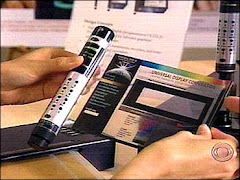
ProtoType OLED Laptop

Compenion by Felix Schmidberger
AMOLED Concept Watch

by CoNNext
LG Phillips

AMOLED Prototype Display
Samsung AMOLED
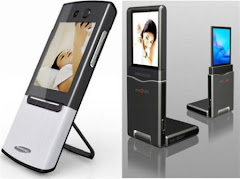
Prototype SmartPhones
OLED Flex Display
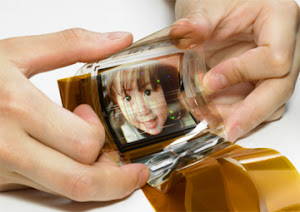
16.7 million colors
Sony Ericsson Unveils Walkman and Playnow Plans
Sony Unveils World First OLED TV for December 2007

Super-Thin 3mm Display
Sony XEL-1

Razor Thin OLED TV
Butterfly Concept AMOLED Phones

OLED Ribbon

Archimedes Principal in Organic Light
Nokia AMOLED Displays
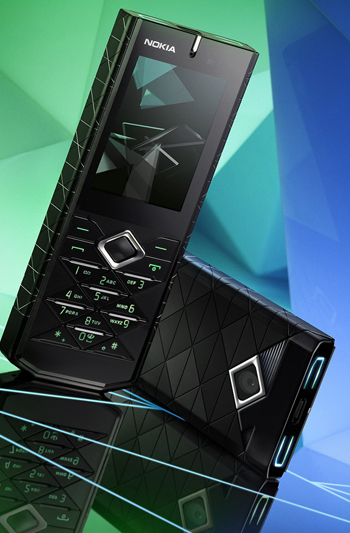
Samsung E950

OLED Display
Blue Oled

IRiver 8gb OLED Player

Samsung 40" LCD Prototype

Siemens OLED
















